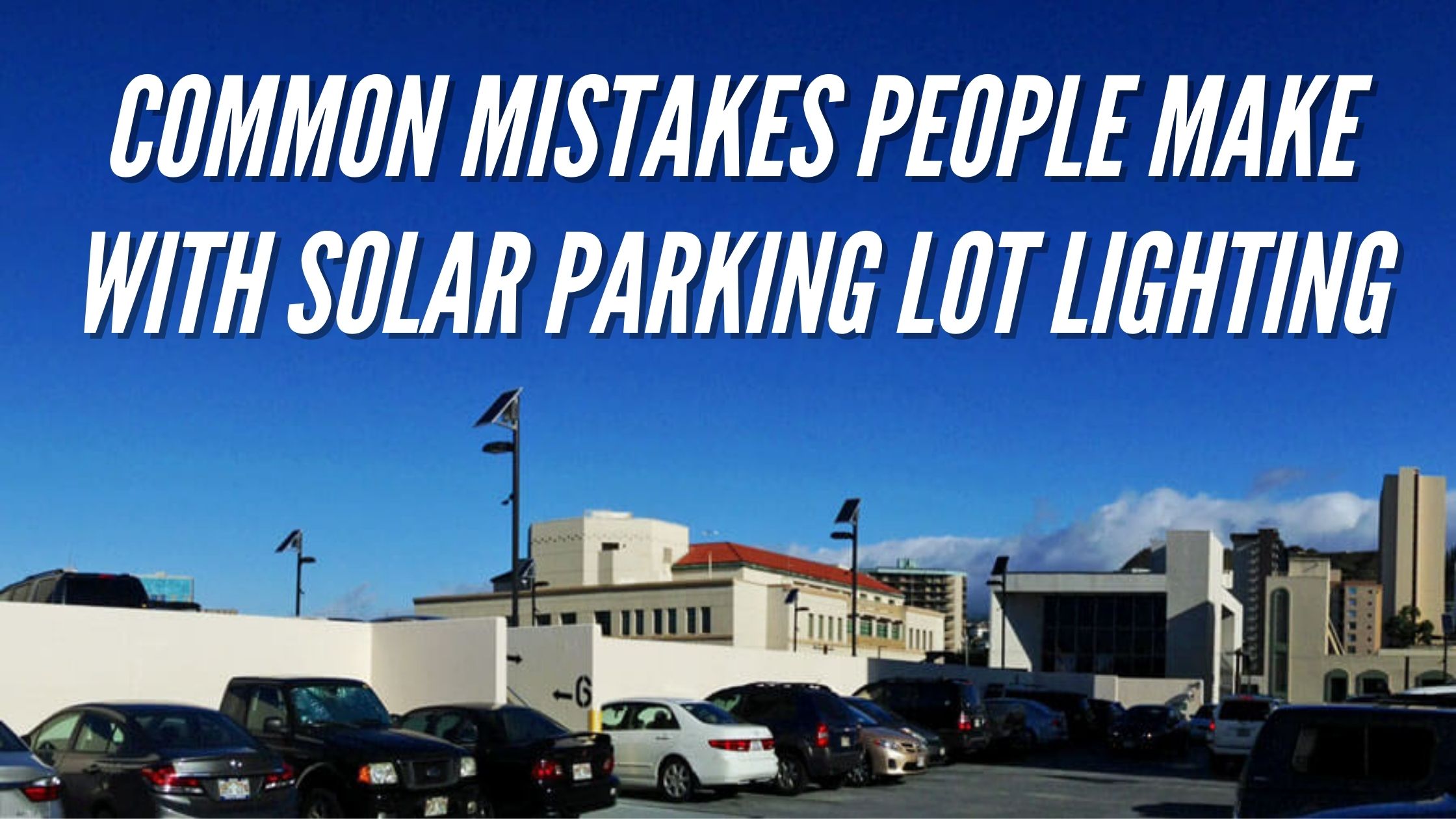


Solar parking lot lighting systems provide a great alternative to a standard grid-powered lighting system since they require no trenching for installation, use zero energy, have no monthly bills, and provide a renewable source of lighting night after night. Unfortunately, there are some common mistakes people make with solar parking lot lighting systems that can easily be remedied. Let’s look at a few of them now.
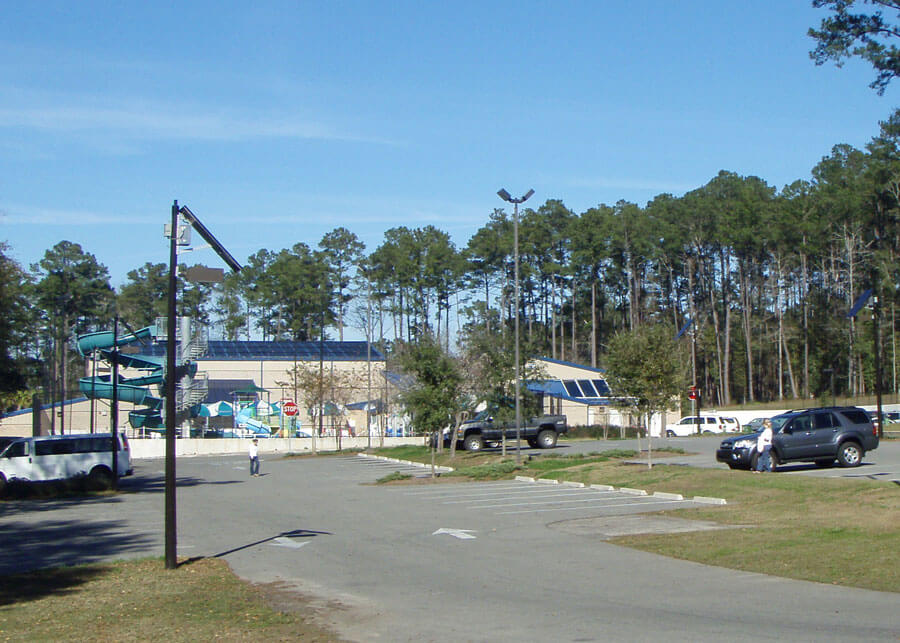
Close attention must be paid to the installation location of a solar lighting system, especially in parking lots, as shade can be a huge issue for installations. Many parking lots have medians that have trees or have the installation location up next to tall buildings. This is not a good idea when dealing with an off-grid solar lighting system. Solar must have full access to direct sunlight from 9 am to 4 pm year-round.
If there is no access to full sun, additional engineering will need to be done to determine the best way to handle the installation. Increasing the solar sizing is one way if there are known issues during certain times of the day. Removing trees or shifting the installation location to another location where direct sunlight is not an issue is another way to combat this problem.
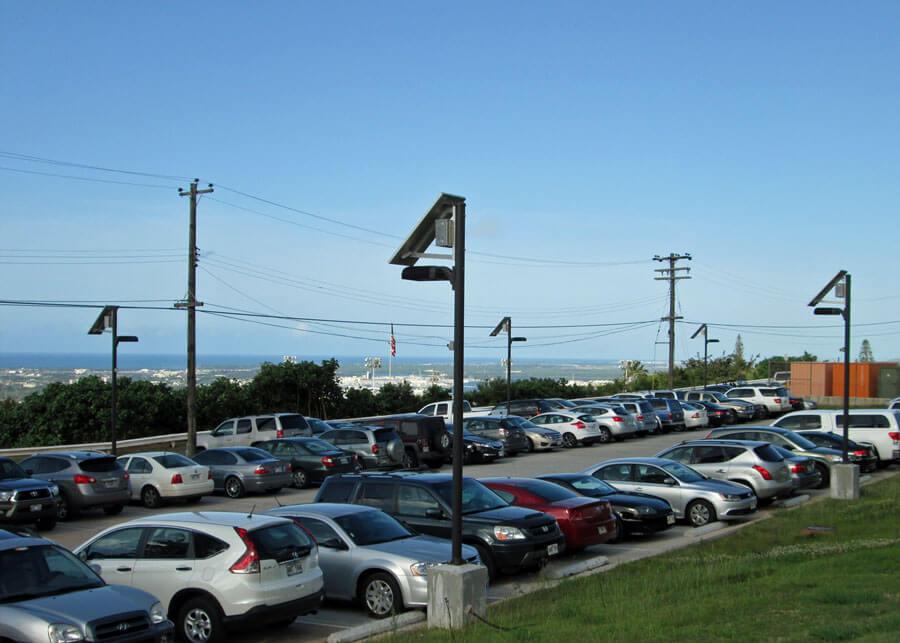
There are many old misconceptions when it comes to lighting. Most popular is providing an “equivalent” when it comes to LEDs versus old style metal halide or sodium lamps. Picking an arbitrary wattage doesn’t necessarily provide the correct lighting with directional LEDs and there is no actual equivalent since old-style lighting performs way differently than the new. Plus, every manufacturer provides different light distributions, lumens per watt, color, and so much more that can cause a huge variation.
Instead, doing a complete lighting plan to meet a light level requirement is the best way to handle this problem. Talk to your lighting engineer/designer to find out what is required for your project, what is requested, and any restrictions that you may have. Provide them with either an AutoCAD file or at least an address to provide the visual requirement to determine where to place the lights and what light distributions are required to illuminate the area.
Doing this will not only save you money, but you will then know for sure that the light levels required to illuminate the parking lot will be met. We have seen time and time again customers going from a 400-Watt metal halide equivalent request to a 50 Watt LED fixture and meeting all light level requirements. This also provides a more custom solution for your project which is definitely something you do not get in the old way of thinking.
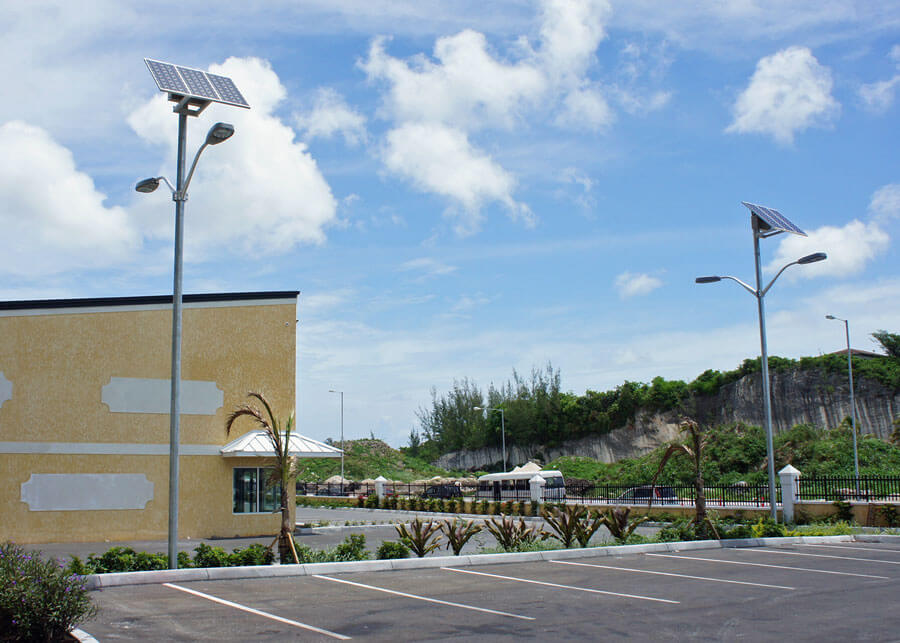
There are many solar lighting manufacturers that do not provide enough storage for their systems. It seems the most popular storage capacity is anywhere from 1 to 3 nights backup. This does not allow for times of inclement weather and will cause continuous replacement of the battery systems. Even with the evolution of lithium ion batteries, which are designed for full discharge continuously, this is not a good idea if a reliable system for safety is required. One cloudy and rainy day, and say goodbye to your reliable lighting system.
Our systems come with a minimum of five nights' autonomy. This ensures that even if you have a couple of days of bad weather, your system will still operate reliably. If you are installing a system in colder climates, we increase the backup since batteries discharge differently in the cold. Plus, colder climates tend to have more consecutive days of bad weather than warmer climates.
Providing this additional backup also increases the battery lifespan, ensuring that you will have fewer maintenance costs over the life of the system. Instead of replacing your batteries every year, you will only need to go out and maintain your system once every five or so years. This lowers your operational costs while providing the safety and security of a reliable system.
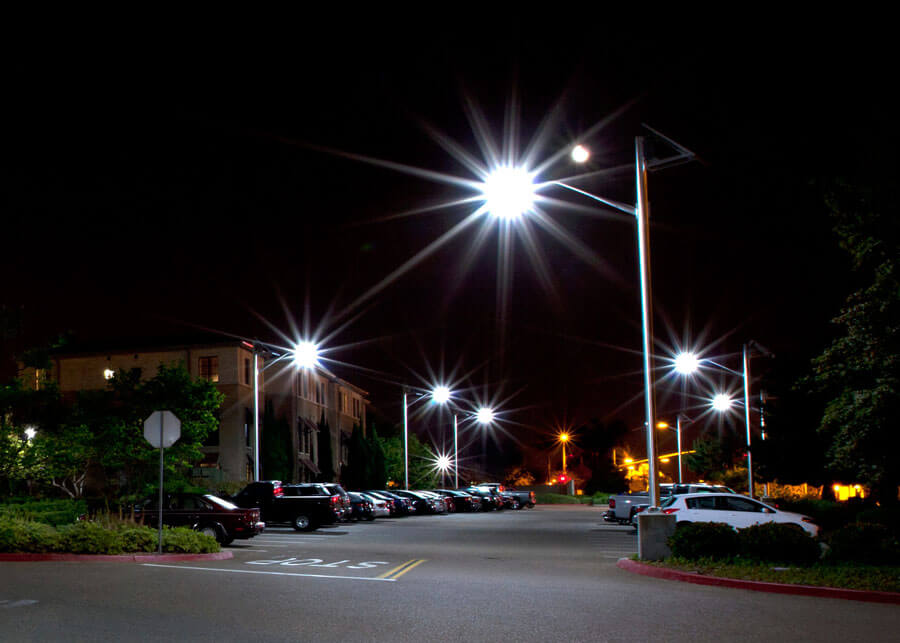
Many cases, solar parking lot lighting systems are being installed in a forgotten dark area of a parking lot, or for an area where line voltage has degraded or broken due to time, and occasionally in a new installation during the design phase. A great many facilities do not have a 24/7 operation and do not require full lighting from dusk to dawn, even into the 14+ hours in the winter, since the operation is shut down. Even some companies have a 24/7 operation, but only have employees outside during shift changes at night. Sizing up only for dusk to dawn operation is a misconception when dealing with solar.
Looking at other options for operation schedules can greatly reduce the system sizing or allow for a larger increase in system wattages when the lighting is necessary. Having the lights reduce after the business closes, or even turn off in some projects, is a great way to reduce costs.
In some cases, only shift changes or times when people are active are the times when lighting is mostly necessary. This is a great option for a reduced wattage until motion is detected to allow for constant illumination, but only high-powered illumination when the area is active. Looking at a project outside the box provides more options and allows for more customization for each project.
In the end, looking at a solar parking lot lighting project at a different angle will ensure you are getting a system that is reliable, meets light level requirements, provides plenty of back-ups, and operates as required for a specific installation. Grid lights work great using arbitrary information, but nailing down more details when going solar allows for a whole list of options not normally thought of, making your project a success in the end.
